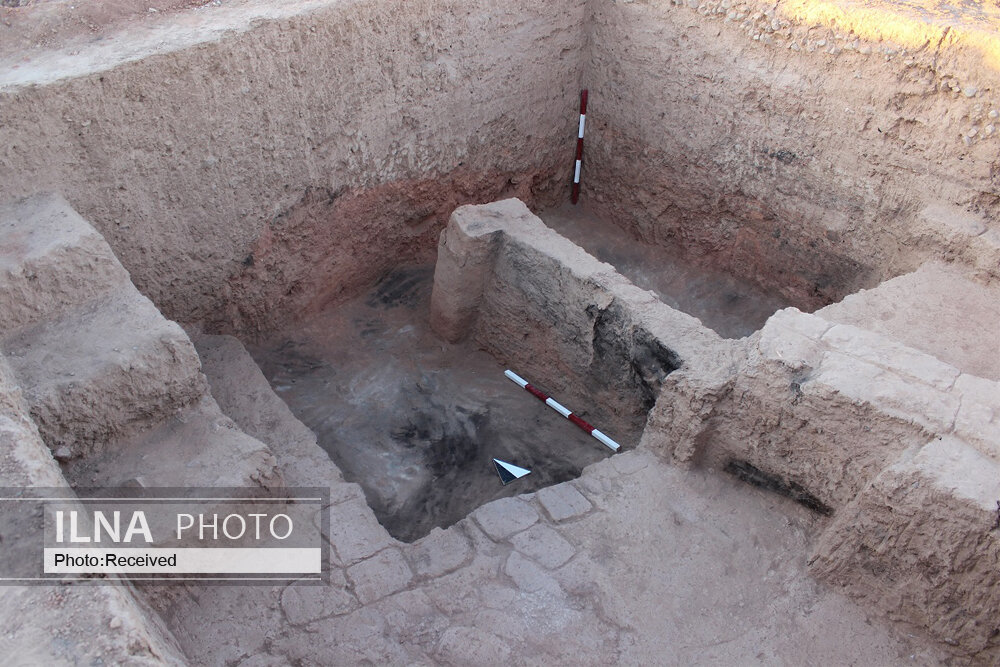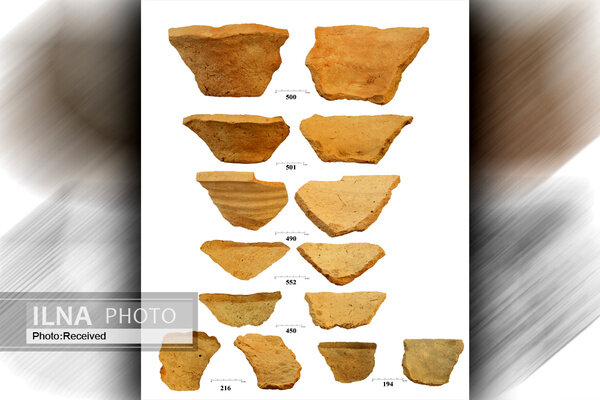Archaeologists in eastern Iran excavate relics from 4th millennium BC

TEHRAN – Archaeologists have recently a wide range of relics and ruined structures that date from the 4th millennium BC onwards.
“We have discovered evidence of early urbanization which coincides with the Uruk period (ca. 4000 to 3100 BC),” ILNA quoted archaeologist Mohammad-Hossein Azizi Kharanaghi as saying on Sunday.
The findings were made during the third archaeological excavation season which, has just come to an end in the Kale-Kub archaeological site, situated in Sarayan county of South Khorasan province.

“Kale-Kub is one of the few pre-historical sites in eastern Iran that contains archaeological evidence and sequences of different cultures from the fifth to the second millennium BC,” Azizi Kharanaghi said.
The development of urbanism in the Near East during the 4thmillennium BC has been an important debate for decades and with recent scientific findings, a revival of this intellectual discussion has come about. Many archaeologists suggest that urban societies first emerged in southern Mesopotamia, and then expanded to the north and northwest.
Furthermore, evidence of early [cuneiform] script came to light during the survey, which also yielded pottery pieces such as the beveled rim bowls, Banesh tray, nose handle, and spouted wares that were common at the time.
“In the end, we found clues about melting copper ore as well as significant evidence of an early example of administrative management,” the archaeologist added.
The team hopes its findings shed new light on people who lived there some 6,000 years ago. In addition, the archaeologists found remnants of industrial architecture, adobe brick walls, and potteries, which offer evidence of “social complexity and an administrative management system”.
Azizi Kharanaghi is optimistic that their studies would clarify the importance of the Kale-Kub site for identifying the dispersal zone of “Beveled rim bowl pottery style” through the classification and typology of the discovered potteries and then a comparison between the pottery style in this site with other sites related to this period.
“Also, we attempt to trace the possible routes for this pottery style to the East and the interaction between the east and west of Iran.
In modern Iran, these pottery styles are reported from the southwest, central Zagros, central plateau, and southeast. Experts believe findings in Kale-Kub show the extension of this culture to the east part of Iran.
Inter-regional interactions had a significant effect on the movement of raw material and production in the extended area. Because of the geographical situation of Kale-Kub in the east of Iran and the existence of metal mines in the region, this site possibly appeared as a supplier place in the interaction networks for the southwest of Iran during the fourth millennium BC.
Referring to previous excavations of the site, Azizi Kharanaghi has said: “In 2018, two trenches were opened to identify the stratigraphy of the high amount of beveled rim bowls in addition to other pottery styles belongs to fourth millennium BC which are already known in southwestern Iran.”
The first well-documented evidence of human habitation in the Iranian plateau was found from several excavated cave and rock-shelter sites, located mainly in the Zagros Mountains of western Iran and dated to Middle Paleolithic or Mousterian times (c. 100,000 BC).
From the Caspian in the northwest to Baluchistan in the southeast, the Iranian plateau extends for close to 2,000 km. The land encompasses the greater part of Iran, Afghanistan, and Pakistan west of the Indus River containing some 3,700,000 square kilometers. Despite being called a “plateau”, it is far from flat but contains several mountain ranges, the highest peak being Damavand in the Alborz mountain range at 5610 m, and the Dasht-e Loot east of Kerman in Central Iran falling below 300 m.
AFM
